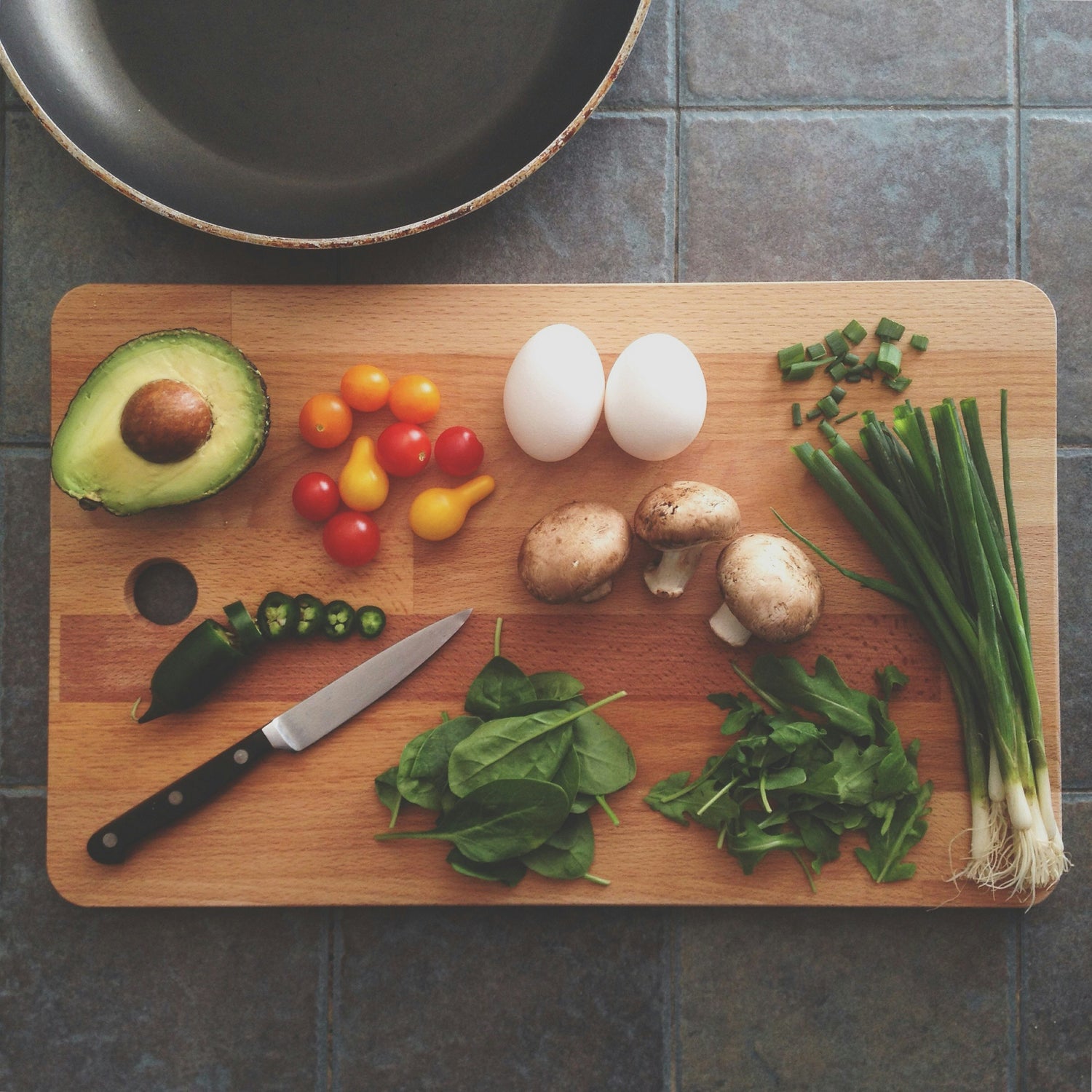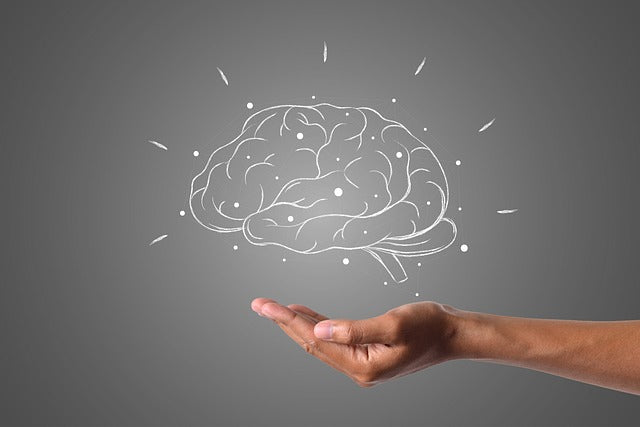Informational purposes only, no product claims implied
A Superior Medley of Natural Botanicals Supports Stamina and Energy
One in every hundred people needs only four to six hours of sleep a night. Called short sleepers, these genetically blessed lucky few bound out of bed in the morning after just a wee bit of shut-eye, ready to spend the next eighteen to twenty hours working hard and playing harder. Short sleepers aren’t just more productive, they tend to be optimists, physically active, high energy and they experience less physical pain than others.
We’d all love to be born so lucky. But even if most of us need a full seven to eight hours of shuteye a night, we can still make the most of our waking hours by turning to the most storied and revered adaptogenic botanicals, ones with thousands of years of use in systems like traditional Chinese medicine and Ayurveda. These herbs are universally regarded, and known to protect and promote endurance, physical capacity, mood, resistance to infections, mitochondrial function, libido, mental sharpness and much more. They enhance resistance to physical, biological, chemical and psychological stresses.[1],[2]
Adaptogens are nontoxic and nonspecific. They increase the body’s resistance in the broadest sense. When used regularly, they help us adapt to stressors and maintain balance across the entire neuroendocrine and immune systems.[3] The term adaptogen was actually invented in 1947 by a Russian scientist named Nicolai Vasilevech Lazarev, who called a novel group of compounds in certain herbs adaptogens, because they were able to elicit a state of nonspecific resistance to stress.[4]
Here’s a breakdown on the latest scientific research into some of the best adaptogens around the globe:
Jiaogulan (Gynostemma pentaphyllum)—the “Immortality” herb. Across southern China, as well as parts of northern Thailand, Vietnam, Korea and Japan, grows the so-called immortality herb, Jiaogulan. The nickname was inspired by the longevity of people known to drink a tea made of Jiaogulan leaves. Though the herb was first mentioned in texts in the 1400’s during the Ming dynasty, it was not until the 1970’s that scientists Masahiro Nagai and Tsunematsu Takemoto discovered Jiaogulan’s secret: 82 different saponins, beneficial molecules that support key organ systems, blood flow, circulation, energy, endurance and more. Called gypenosides, scientists have since tabulated the total saponins to run as high as 189.[5] The plant also offers potent antioxidant activity, as well as beneficial phenolic compounds, such as chlorogenic acid, which can support healthy regulation of blood sugar and heart health.[6],[7]
American Ginseng Root (Panax quinquefolius)—the prized “Yin” Ginseng.
Medicinal use of ginseng reaches back almost 2,000 years to ancient China. The first written record appears around 100 A.D., in the Shennong Bencao Jing, a classic herbal invoking a mythological divine farmer (Shennong) who supposedly tried as many as seventy herbs a day, to learn which ones were beneficial. Ginseng is included in this herbal.[8] In ancient texts, ginseng was said to support the five ‘viscera’ –the spleen, liver, kidneys, heart and lungs. It was thought to quiet the mind, open the heart, and sharpen the wits—as well as prolong life. Today, ginseng is seen as a general health elixir and performance enhancer.
Ginseng contains at least 28 active saponin compounds called ginsenosides. They are similar to Jiaogulan’s gypenosides. Ginsenosides support mental acuity and memory, and protect neurons from overactivity and toxicity.[9] American ginseng is prized as a more “yin” form of the plant, thought to be calming, reduce stress, and enhance mental clarity.[10]
Acai Berry (Euterpe oleracea)—the original “Superfruit”. Acai has been consumed since ancient times by Brazilians. Its reputed health benefits include extraordinary antioxidant and anti-inflammatory properties.[11],[12] Acai is rich in polyphenols, flavonoids, fatty acids, carbohydrates, fiber, vitamins and minerals. Studies in humans have demonstrated impressive antioxidant activity. One “gold standard” double-blind, placebo-controlled, crossover study looked at healthy individuals aged 19 to 52. Those who drank a juice rich in acai pulp had a rapid increase in antioxidant activity in their blood.[13]
Himalayan Goji Berry (Lycium barbarum)—the “longevity” berry. Goji berries are said to taste like a cross between a cherry and a cranberry. They grow naturally everywhere from the high altitude of the rugged Himalayan mountains to the low altitude of the searing Arizona desert, and the popular fruit is known by different names in different cultures. The berry’s ability to adapt to such an astonishing variety of climates and altitudes is due to the distinct phytonutrients they contain, and which confer their benefits on those who eat them. According to goji berry lore, Li Ching Yuen lived to at least 150 years old by drinking a medicinal soup whose recipe was given to him by a long-lived Taoist hermit. Supposedly Li Ching Yuen drank the soup daily and lived to a remarkable old age.
Research on goji berry suggests it may be anti-aging, neuroprotective, antioxidant, and support a balanced immune response.[14] Numerous studies have shown that drinking the juice of goji berry for two to four weeks leads to a significant increase in energy levels, stamina, sharpness of mind, serenity and wellbeing.[15],[16],[17]
Peruvian Maca (Lepidium meyenii)--the Andean Ginseng. Peruvian maca grows in Peru at over 4,000 meters, battling extreme cold, as well as intense UV light, high winds, and either heavy rains or very dry conditions. How does it survive such tough conditions? Through the phytonutrients and metabolites it has evolved, and which ancient Peruvians living in the highlands have long benefitted from.
Maca is actually a member of the healing cruciferous family (like cabbage, broccoli, or cauliflower).[18] Maca has long had a reputation as a stimulant and energizer, dating back to chronicles form the Spaniard conquest of Peru. Residents of high altitude Peru regularly consuming maca have lower blood levels of an inflammatory molecule, interleukin 6 (IL-6), than their counterparts who don’t consume maca.[19] Special compounds in maca, called macamides and macaenes, appear at least partly responsible for its benefits. It has been shown to enhance endurance as well as libido in several studies.[20]
Adaptogens as a Perfectly Tuned Violin
Many other adaptogenic herbs have similar supportive and invigorating properties—such as Schisandra fruit, Asian Licorice root, Rhodiola Rosea, Astragalus root, Reishi mushroom, Catuaba, Guarana, Ashwagandha and others. Blending these remarkable botanicals together in mutually supportive ratios can gently lift us toward balance and harmony, and help our bodies respond to stress with resilience and vigor, not with fight, flight, or exhaustion. Master herbalist Dan Moriarty, founder of Sun Horse Energy and creator of popular formulas like Thrivagen and Nano Mojo, works specifically with these adaptogenic herbs. His view is that your body is “like a violin. If tuned too tightly the stress will break the strings. If tuned too loosely, the strings will be floppy. Either way, you won’t have music. Adaptogens tune your body to the right pitch and tension.”
Absorption and uptake of adaptogenic herbs can be enhanced by liposomal delivery, although encapsulating these complex herbals in a single liposomal formula is a challenge. The result, however, is a superior traditional formula that packs more power and harmonics than any standard formulation.
You might also be interested in:
The Marvelous Magic of Ginseng
Natural Remedies for Anxiety and Stress
Adrenal Fatigue: What it Really Means
References:
[1]Brekhman II, et al. New substances of plant origin which increase non-specific resistance. Ann. Rev. Pharmacol. 1968. 8, 419–430.
[2]Panossian A, et al. Stimulating effects of adaptogens: an overview of clinical trials of adaptogens with particular reference to their efficacy on single dose administration. Phytother. Res. 2005. 19, 819–838
[3]Wagner H. Plant Adaptogens. Phytomedicine 1994. Vol. 111994, pp. 63-76
[4]Lipnick RL et al. Trends Nikolai Vasilyevich Lazarev, toxicologist and pharmacologist, comes in from the cold. Pharmacol Sci. 1992 Feb;13(2):56-60.
[5]Cui J et al. Gynostemma pentaphyllum: identification of major sapogenins and differentiation from Panax species. Eur J Pharm Sci. 1999 Jul; 8(3):187-91.
[6]Yantao Li. Anti-cancer effects of Gynostemma pentaphyllum (Thunb.) Makino (Jiaogulan) Chin Med. 2016; 11: 43.
[7]Dunja S et al. Phenolic acids significantly contribute to antioxidant potency of Gynostemma pentaphyllum aqueous and methanol extracts. Industrial Crops and Products 2016 (84): 104-107
[8]Yang Shouzhong (translator), The Divine Farmer's Materia Medica, 1997 Blue Poppy Press, Boulder, CO.
[9]Scholey A. Effects of American ginseng (Panax quinquefolius) on neurocognitive function: an acute, randomised, double-blind, placebo-controlled, crossover study. Psychopharmacology (2010) 212:345–356
[10]Jia L et al. Current Evaluation of the Millennium Phytomedicine— Ginseng (II): Collected Chemical Entities, Modern Pharmacology, and Clinical Applications Emanated from Traditional Chinese Medicine. Curr Med Chem. 2009 ; 16(22): 2924–2942
[11]Portinho JA et al, Efeitos benéficos do açaí. Int. J. Nutrol. 2012. 5, 15–20.
[12]Schauss, AG et al. The effect of açai (Euterpe spp.) fruit pulp on brain health and performance. Bioactive Nutraceuticals and Dietary Supplements in Neurological and Brain Disease. 19) Elsevier Science. 2015. (19): 179–186.
[13]Jensen GS et al. In vitro and in vivo antioxidant and anti-inflammatory capacities of an antioxidant-rich fruit and berry juice blend. Results of a pilot and randomized, double-blinded, placebo-controlled, crossover study. Journal of Agricultural and Food Chemistry, 2008. 56(18), 8326–8333.
[14]Tahir S. Goji Berry (Lycium barbarum)— A Superfood. In: Nonvitamin and Nonmineral Nutritional Supplements. 2019 Elsevier Inc.
[15]Amagase, H. Comparison of Lycium barbarum-containing liquid dietary supplements to caffeinated beverages on energy/caloric metabolism activity and salivary adrenocortical hormone levels in healthy human adults. FASEB J. 2010. 24, 540.13–1540.13.
[16]Amagase H et al. Meta-analysis of the general effects of a standardized Lycium barbarum fruit juice shown in randomized, double-blind, placebo-controlled human clinical studies. FASEB J. 2009. 23, 716.1–1716.1
[17]Amagase H et al. A randomized, double-blind, placebo-controlled, clinical study of the general effects of a standardized Lycium barbarum (goji) juice, GoChi™. J. Altern. Complement. Med. 2008. 14, 403–412.
[18]Tilg H. Cruciferous vegetables: prototypic anti-inflammatory food components. Clin. Phytosci. 2015. 1, 10. G
[19]Gonzales GF et al. Role of maca (Lepidium meyenii) consumption on serum interleukin-6 levels and health status in populations living in the Peruvian Central Andes over 4000 m of altitude. Plant Foods Hum. Nutr. 2013. 68 (4), 347–351.
[20]Gonzales GF et al. Effect of Lepidium meyenii (Maca), a root with aphrodisiac and fertility-enhancing properties, on serum reproductive hormone levels in adult healthy men. J. Endocrinol. 2003. 176 (1), 163–168
[/et_pb_text][/et_pb_column][et_pb_column type="1_4"][et_pb_sidebar _builder_version="3.12.2" area="et_pb_widget_area_6" header_text_color="#022c52" body_text_color="#022c52" orientation="right" /][/et_pb_column][/et_pb_row][/et_pb_section]




